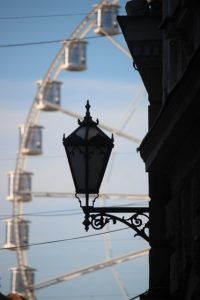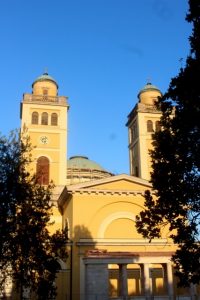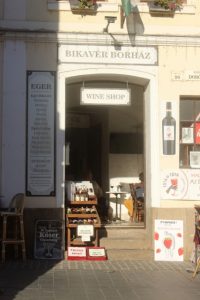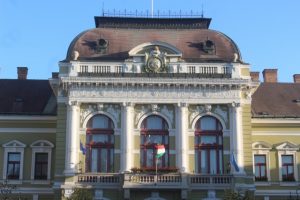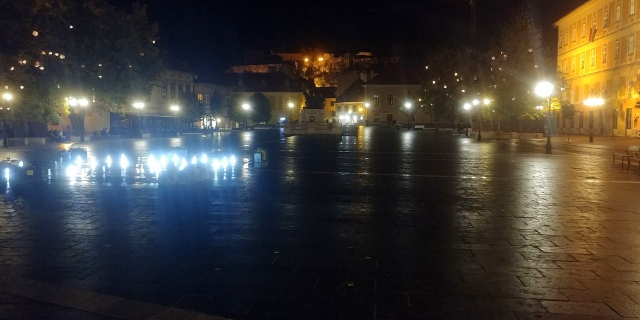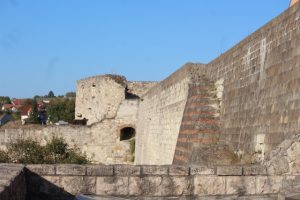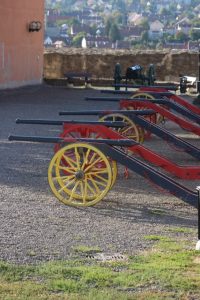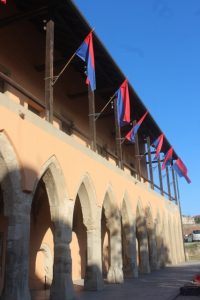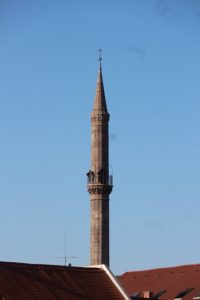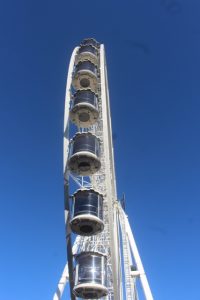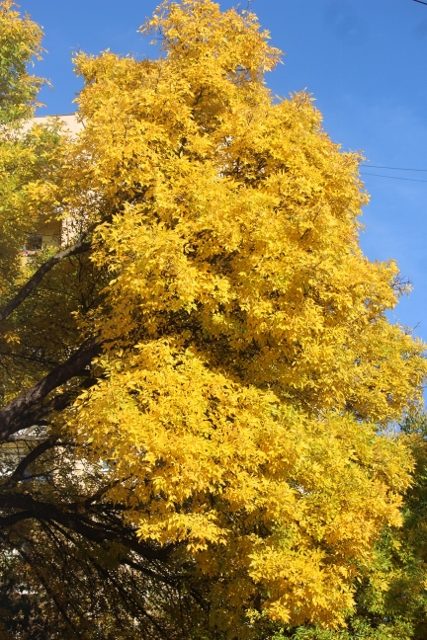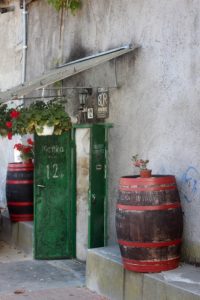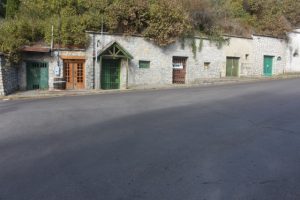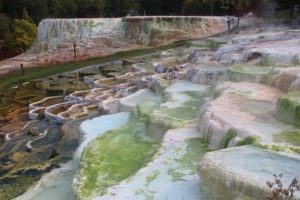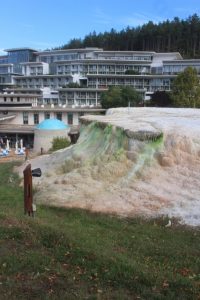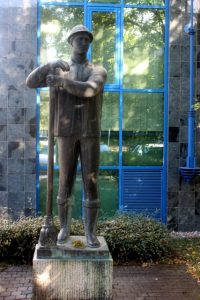Eger is a pleasant, albeit touristic town, with plenty of over-exploited touristic atractions in the surroundings.
We have clearly hit the tourist trail by now. After Hortobagy National Park, Eger, too, is very touristic. Multi-language restaurants, the wine trail, even a Ferris wheel. Nevertheless, it is a pretty town, with a pedestrian zone with lots of narrow, winding streets, a few attractive squares, churches and even a castle – heavily restored, but offering nice views.
The castle is a bit of a thing, here. Apparently, in 1552 it withstood an Ottoman siege of 35,000 to 40,000 soldiers – some say 100,000 (and some say 12,000, but alas) – with only 2000 locals, including women who poured boiling fat over the attackers. A hero’s story. Never mind that the Ottomans came back in 1596, and took the castle within a week, and subsequently sacked and burned down everything Eger. Which is, perhaps, why the castle is heavily restored. And why one of the oldest, original buildings is a minaret.
Just outside town is the attractively named Valley of the Beautiful Women, reason enough to explore. From descriptions I had expected some winding valley, with sloping vine yards on both sides, and wine tasting opportunities every few hundred meters, or so. Wrong. The Valley of the Beautiful Women is in fact a large square, surrounded by a couple of restaurants and many more wine bars, catering for a large amount of tourists. Who, beginning of October, aren’t there, really, not even on a sunny Sunday afternoon. So almost all wine tasting venues are closed, and the ones open are eerily empty. In fact, the highlight of the afternoon is a guy stuffing grapes down a crushing machine, the first part of the wine production process, in a corner of the square. But even this doesn’t attract the masses anymore. It is too late.
Which is not to say that there is anything wrong with the Eger wine itself. Especially the Egri Bikaver, a strong red blend of at least four different grape varieties, is quite an acceptable wine, one of the better ones we have had so far. Its name means Bull’s Blood….
A little further outside town, in the village of Egerszalok, the main business model is based on spa resorts; from the pictures we saw a series of outdoor pools in and around a travertine and salt mountain from which the spring water originates. Well, the reality is a little different. There is a salt mountain, all right, although a lot smaller than we had expected. And a little further, downhill, is this enormous resort, with a couple of outside pools with views of the salt. And even though it is pretty cold, the pools are full of people. Hungarian tourists appreciate hot spring water over tasting Bull’s Blood, so much is clear. But are we going to sit in between them, just to stare at a distant salt hill? Don’t think so.
(incidentally, the salt water spring here was discovered in 1961, when drilling for oil, and I don’t think this was the only spring encountered this way. The resulting spa industry is far more successful that the Hungarian oil industry!)
Next: Miskolc, where we do find a spa.
